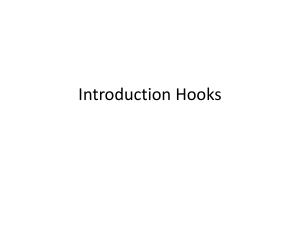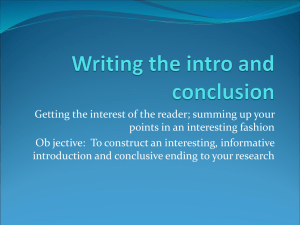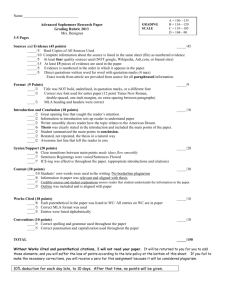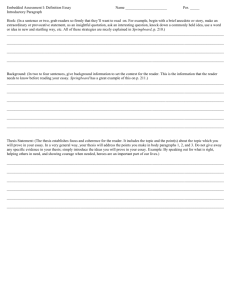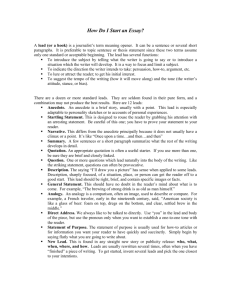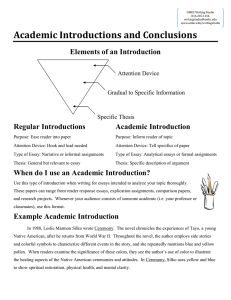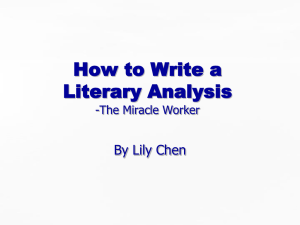Introductions and Conclusions
advertisement
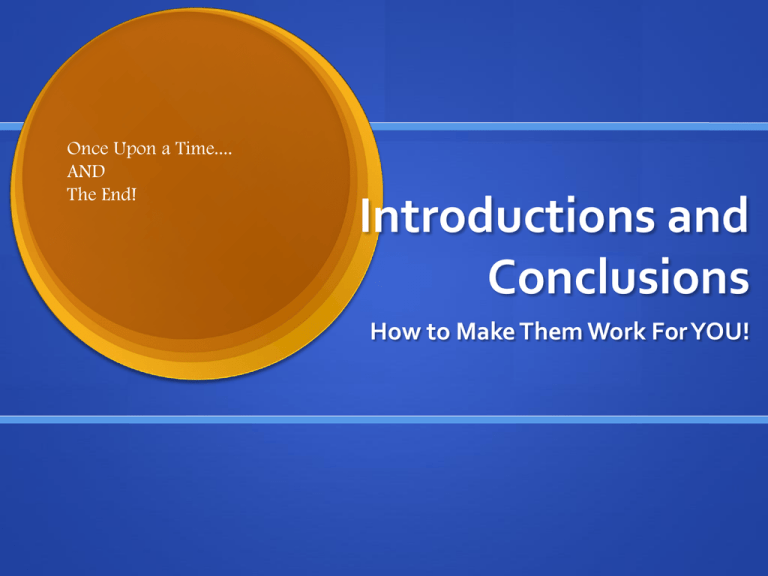
Once Upon a Time.... AND The End! Introductions and Conclusions How to Make Them Work For YOU! Purposes for Introductions The opening/introduction grabs the reader’s attention. clearly implies an organizational structure of the paper. is connected to the body of the writing and is a clear lead-in to the main idea or thesis. includes a thesis that is stated or implied. Strategies for Introductions/Leads A writer may begin with anecdote or scenario (a brief story that captures the essence of the issue or situation) A brief history/overview 5 W’s of situation or issue and maybe an H an interesting fact an description taking a stand a contrasting situation a combination of the above list Some Leads to Avoid Definition’s Question’s A cliché (e.g., We have all heard the expression, “Better safe than sorry.” But is that true of today’s airline security procedures? ) A unfocused lead (“Adoption programs in this country have some flaws. They are not completely bad, but they need to be dealt with. There are a couple of things I am concerned about, even though, overall, adoption is a good thing.”) Do Not Start With... In my opinion... In this paper I will... The purpose of this essay is to... Do not forget to add to the introduction: Opening Sentence Start your paper with a general statement about your topic that catches the reader’s attention, a relevant quotation, anecdote, fascinating fact, definition, the position opposing one you will take, or a dilemma that needs a solution. Context Provide the information the reader will need to understand the topic. Thesis Statement State your arguable position on the topic that you will support with evidence in your body paragraphs. Conclusions Purposes of Conclusions The ending/conclusion clearly connects introduction and body of the paper with insightful comments or analysis. wraps up the writing and gives the reader something to think about. Conclusion Strategies A writer may end with a call to action a generalization from given information a self-reflection a response to a “so what?” question a combination of the above list an “echo” from the beginning of piece a quotation an anecdote an interesting fact a prediction Concluding paragraph: This paragraph should include the following: 1. tell the reader what they can do about the issue or give a prediction to what could happen 2. a restatement of the thesis statement, using some of the original language or language that "echoes" the original language. (The restatement, however, must not be a duplicate thesis statement.) 3. a final statement that gives the reader signals that the discussion has come to an end.
